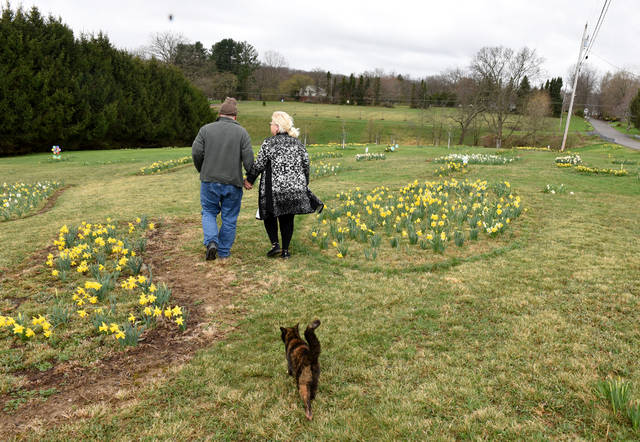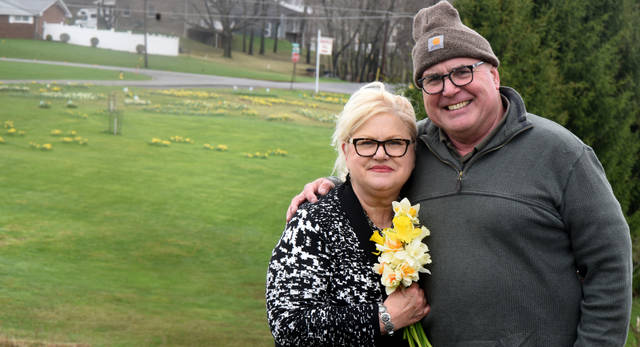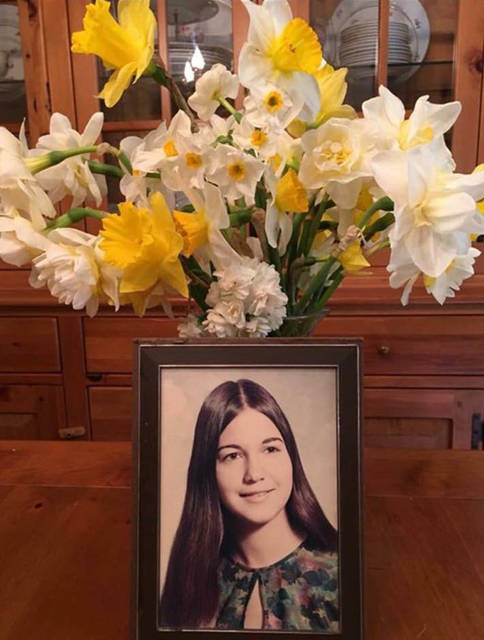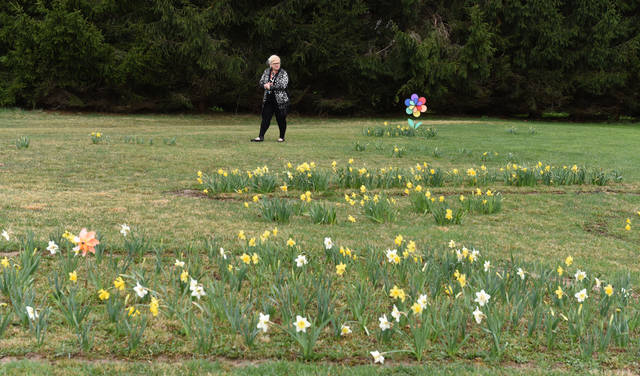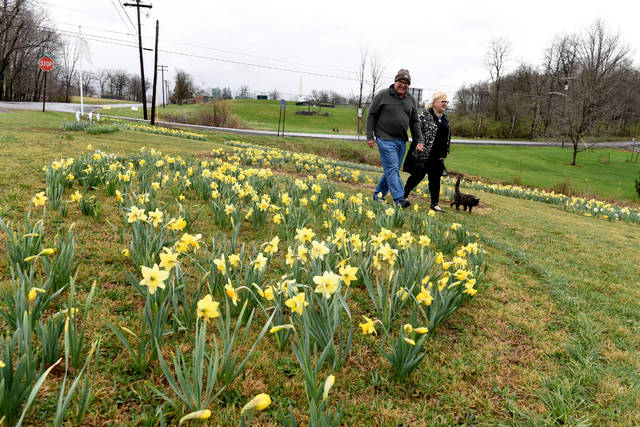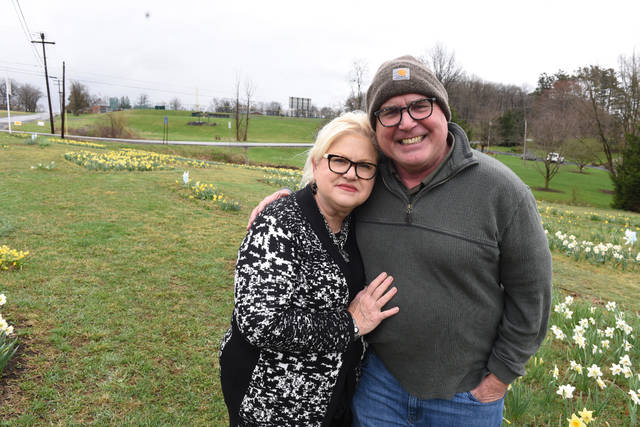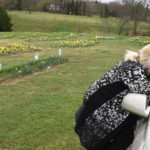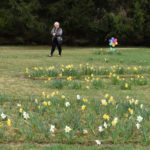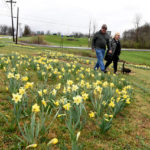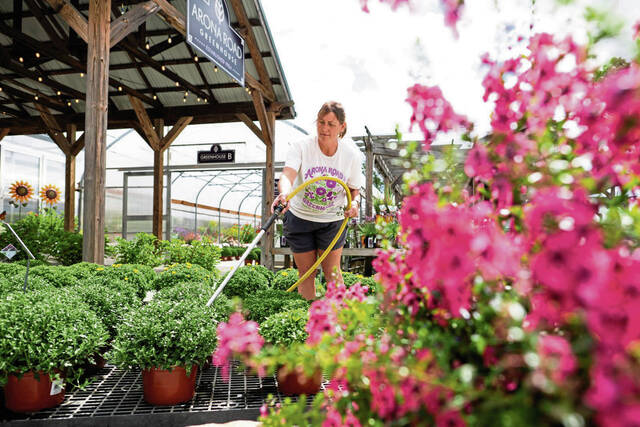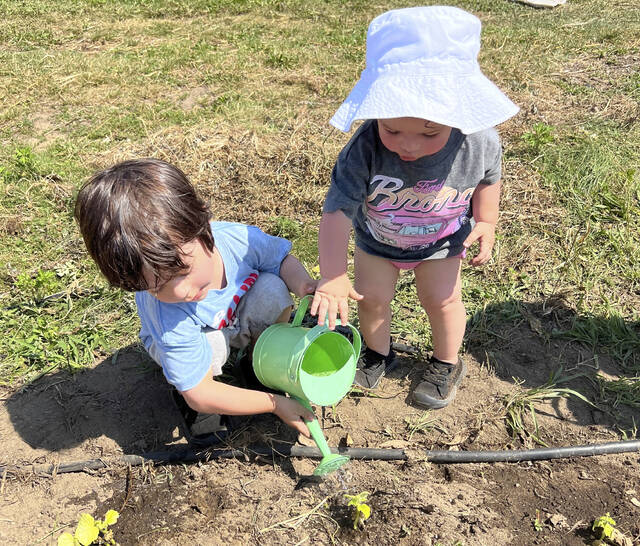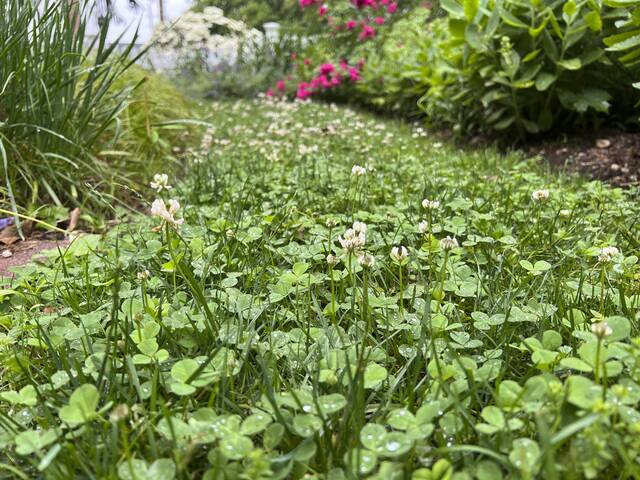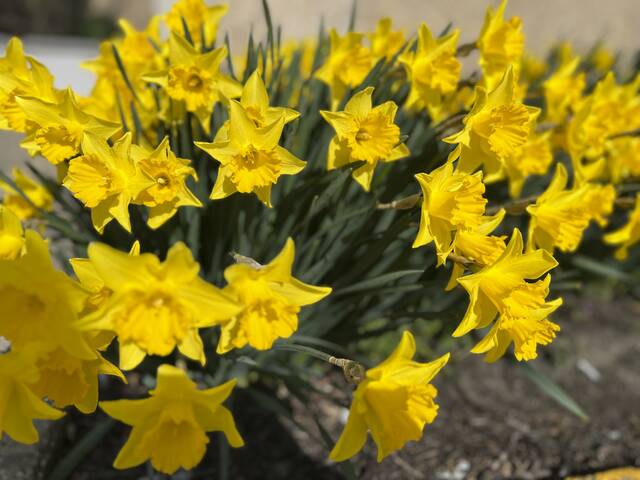A stiff breeze blows through thousands of bright yellow daffodils, making them dance as Emily Milich-Franusich and her husband Michael Franusich walk hand in hand through a 2-acre field of blooms as their cat Sophie leads the way in Butler Township, Butler County.
Since 2015 the couple has spent their fall planting these bulbs in honor of Emily’s sister Marsha, who passed away the same year.
“Marsha was a wonderful person who unfortunately had a dramatic brain injury (after a fall),” Emily says. Some of her ashes were buried with the flowers and the rest are with their mother.
Renewal of life
“We’ve always loved daffodils,” Emily says. “My mom has planted daffodils all through the woods here. They come back in the spring; it’s a renewal of life. (Marsha) was an organ donor so she renewed life for several people.”
Michael has a rich history with daffodils too, as he planted them with his mother. When they bloomed during his childhood, they were called “Mikey flowers,” not daffodils, around his house. He was also taken to Daffodil Hill at the foot of the Sierra Nevada mountain range, which astonished him. These flowers, though, have an even more special cathartic purpose.
“I felt it was a lot better to have something interactive to have here,” he says. “Marsha was a free spirit, loved being outside and loved gardening. It was her favorite thing.”
“It’s a living memorial,” Emily says, “and I think of her when she was well, vibrant and full of life.”
Emily’s parents, Matilda and Michael Milich, originally bought the old Duffy farm in 1948. Michael Milich was returning from the war and Matilda had saved money while working in the steel mill. Eventually they started selling off plots to their children.
Lots of bulbs
Since the start of their memorial daffodil planting, the Franusichs have added more than 10,000 bulbs that they source locally.
Through the years, their planting technique has improved. Early on it was one hole and one bulb with a bulb planter, but now the pair work together adding more than one in each planting hole. Michael punches the holes, Emily drops in a few bulbs, and he pushes them down with his boot. For patterns, they use a survey marker that sprays a mark on the grass, which is where the bulbs are planted.
“We got better and better at it,” he says.
Now the couple can plant 300-400 per hour, and there’s not much that slows them down, according to Emily.
“I did it the fall I got my knees replaced,” she says laughing, “one in July, one in November. Within a week of the November one I was sitting in the dirt planting.”
The thrill of the spring season brings with it anticipation for the couple.
“The cheerfulness of the daffodils, we get so excited when we see them coming up,” she says. “We just go nuts. Before you know it, they’re all blooming.”
A destination
It’s not uncommon to see cars slow down, stop, take pictures and even let their children out to run through the paths between the daffodils. On this day a car stopped and Emily started to chat with them, finding out they knew her father. They came specifically to see the blooms.
“I hope they smile and say, (gasp) ‘look at that,’” she says of the beautiful yellow flowers. “I hope it brings them the joy we get from seeing the color and the life.”
The night before there was a storm on the horizon.
“I wasn’t worrying about our house blowing over,” Emily says. “I was worried about the daffodils. I’ve touched every one of these bulbs, they are like my children.”
She talks about walking from her childhood home to the bus stop, growing up here with her sister and brother.
“She’s my only sister, I idolized her. I want it to be a remembrance of her love of gardening.”
Looking towards the family homestead she continues, “I will hopefully take my last breath in that house whenever my time comes, hopefully not too soon … we’ve got a lot of planting to do.”


